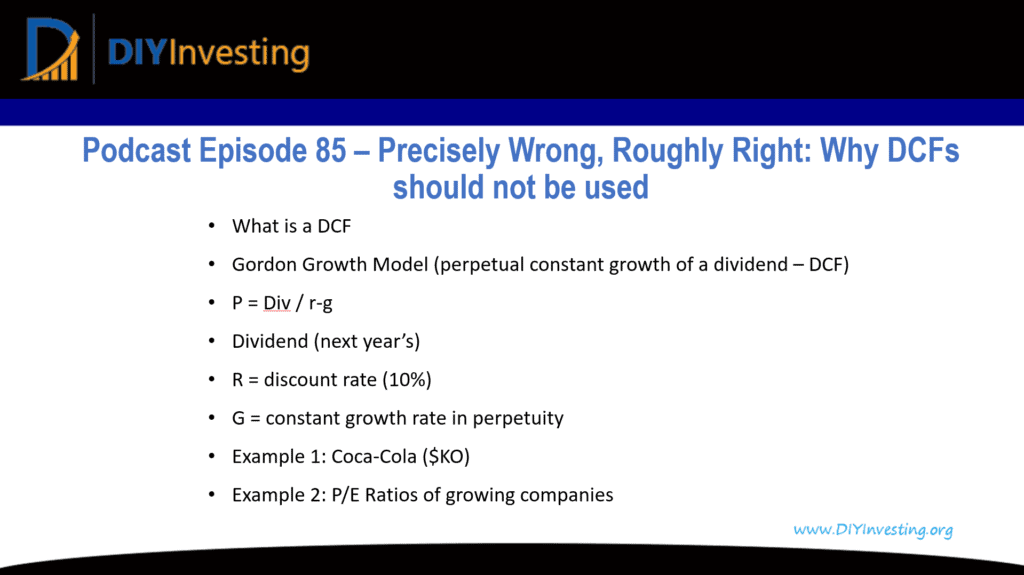Mental Models discussed in this podcast:
- Discount Rates
- Gordon Growth Model
- Discounted Cash Flow Calculation
Please review and rate the podcast
If you enjoyed this podcast and found it helpful, please consider leaving me a rating and review. Your feedback helps me to improve the podcast and grow the show’s audience.
Follow me on Twitter and YouTube
Twitter Handle: @TreyHenninger
YouTube Channel: DIY Investing
Support the Podcast on Patreon
This is a podcast supported by listeners like you. If you’d like to support this podcast and help me to continue creating great investing content, please consider becoming a Patron at DIYInvesting.org/Patron.
You can find out more information by listening to episode 11 of this podcast.
Show Outline

Why DCFs should not be used
- What is a DCF?
- An estimate of all future cash flow (dividends or earnings) and discounted back to the present.
- When you add up these values you get the intrinsic value of a company.
- Gordon Growth Model (perpetual constant growth of a dividend – DCF)
- P = Div (next year’s) / (r-g)
- R = discount rate (10%)
- G = constant growth rate in perpetuity.
- Example:
- Dividend = $1.64 (Coca-Cola)
- Specific estimates: $27.85 (based on specific year estimates)
- Growth rate: 3% = $23.42 (equivalent to a 7% dividend yield)
- Growth rate: 5% = $32.80 (equivalent to a 5% dividend yield)
- Current price: approx. $46 per share
- Always invert.
- Dividend yield of 3.5% or growth rate of 6.5% in perpetuity.
- Example 2: P/E ratios for growing companies.
- I want to estimate how quickly I can reach a 10% earnings yield.
- I want it to be less than 5 years.
- Without compounding this means a 10% grower you can pay P/E of 15.
- A 20% grower you can pay P/E of 20.
- All of these imply you can sustain that growth for 5 years.
- Why ignore compounding? It’s simpler and conservative.
Summary:
Discounted Cash Flow calculations and models provide precise estimates of intrinsic value but tend to be flawed. It is much better to improve accuracy by ignoring DCF and using a simple intrinsic value calculation like the Gordon Growth Model.
